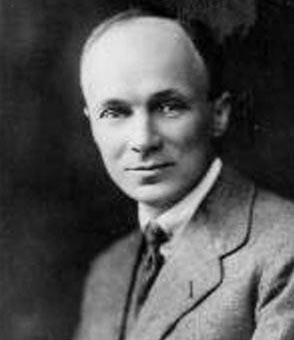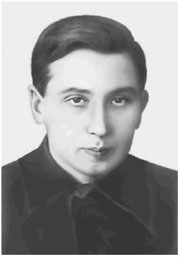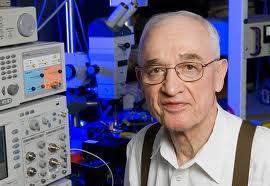Invention History of Light Emitting Diode (LED)
Most of us are aware that the semiconductor light-emitting diode or the LED is the major component of today’s technology. All our houses have plenty of tiny glowing indicators provided by LEDs; these indicators are employed for various aspects like reading CD and DVD disks in computer and game console drives or to transmit signals from remote controls to electronic equipment. Cars that are equipped with LED indicators are increasing in number these days. Most significantly, it should be noted that LED is a crucial link between electronics and photonics. We have already written an article about the basics and Working of LED in CT.
Well, how and when was the LED discovered? Most people think that it was discovered by the American researchers in the 1960s. However, there are discrepancies. Perhaps, Henry Round who worked at the Marconi Labs noticed the emission of light from a semiconductor diode some 100 years ago!! Besides, Oleg Losev, a Russian genius is also believed to have discovered the LED. Let us travel back to see what actually happened.
Henry Round and His Observations
Henry J Round, an assistant of the popular researcher Marconi, published a 24-line note in the Electrical World in February 1907. In that note, he reported of light emission from carborundum (raw silicon carbide) “and other substances” (that’s how he mentions) when he was working on the cat’s whisker detectors for the radio. It seems that from the carborundum, he noticed a yellowish light at low voltage and yellow, light green, orange and blue lights at higher voltages on various points of different crystals. He had mentioned that in all cases tested, the glow appeared to have come from the negative pole and a bright blue-green spark had appeared at the positive pole. He noted a probable link between the voltage across the carborundum junction and the emission of light.
A Comparatively Forgotten Figure – Oleg Losev
A lot of people today believe that much less was exposed about the actual inventor of LED, Oleg Losev. Oleg Vladimirovich Losev was a young and extremely talented scientist who spent his working life as a technician in several radio laboratories in the Soviet Union. Losev did not receive any formal education, however, during the short research career, he published about 43 papers and was granted 16 patents. He also made quite a few major discoveries in solid-state electronics including the first ever solid-state semiconductor amplifier and generator, the crystadine.
The Glowing Diode and Losev
Coming to the invention of LED, it was in the mid 1920s that Losev observed emission of light from zinc oxide and silicon carbide crystal rectifier diodes that were used in radio receivers when current was passed through them. In 1927, his first paper on emission of silicon carbide diodes entitled as “Luminous carborundum [silicon carbide] detector and detection with crystals” was published in a Russian journal. Soon, the paper was published in a few important publications in British and German journals as well. These effectively constituted the discovery of what we now know as the light emitting diode or the LED: Losev set up the current threshold for the onset of emission of light from the point contact between a silicon carbide crystal and a metal wire and recorded the spectrum of this light. He was able to provide a comprehensive study of the LED and outlined its applications in the 16 papers published between the years 1924 and 1930.
Losev also understood the non-thermal nature of the light emission and recognized that LED emission is related to the action of the diode; furthermore, he also measured the current-voltage characteristics of the device in a detail manner. He also studied the temperature dependence of the emission down to the temperature of liquefied air and modulated that LED emission up to the frequency of 78.5 kHz by passing an AC current to the contact. Losev was intensely aware of the contemporary developments in physics in spite of being a young technician without any academic qualifications!!
Losev used Einstein’s quantum theory to describe the action of LED and called this emission process, “inverse photo-electric effect.” He did not stop with that. He also proposed a formula that relates to the voltage drop on the diode contact, V, The electronic charge, e, and the frequency of light emission, h, that is v = eV/h. The formula is still in use. Losev was able to relate the effect in silicon carbide to the diffraction of the electron de Broglie matter waves despite the fact that the semiconductor band theory had not fully developed in those days. It is being said that once Losev wrote to Einstein asking him for help in developing the theory further, but he did not receive any response. In 1929, Losev published detailed measurements of LED spectra and quite clearly observed their dependence of currents. Remarkably, the first significant blue LEDs that were reinvented in the early 1990s used silicon carbide.
It is undeniable that Losev was the first person to understand the potential of LED in telecommunications. In his 1927 filed patent titled ‘Light Relay’ he wrote, “The proposed invention uses the known phenomenon of luminescence of a carborundum detector and consists of the use of such a detector in an optical relay for the purpose of fast telegraphic and telephone communication, transmission of images and other applications when a light luminescence contact point is used as the light source connected directly to a circuit of modulated current.” Don’t you think that this uncelebrated genius should have been the one who marked the beginning of the photonic telecommunications evolution?
During the siege of Leningrad In 1941, Losev was working on an amplifying three-terminal semiconductor device, in a possible prelude to Brattain, Bardeen and Shockley’s transistor work. Sadly, his paper on the subject was lost and this great inventor died of starvation in a year.
Infrared LED
On and off, there were researches going on in the field and quite a few researchers did file a few patents on several related findings.
Years later in 1961, Robert Baird and Gary Pittman invented and patented an infrared LED for Texas Instruments. This is thought to be the first LED, however, since it was infrared, it was beyond the visible light spectrum. Perhaps, it’s a well known fact that humans cannot see infrared light. Baird and Pittman were actually working to invent a laser diode but ironically they ended up inventing a light emitting diode.
Years later in 1961, Robert Baird and Gary Pittman invented and patented an infrared LED for Texas Instruments. This is thought to be the first LED, however, since it was infrared, it was beyond the visible light spectrum. Perhaps, it’s a well known fact that humans cannot see infrared light. Baird and Pittman were actually working to invent a laser diode but ironically they ended up inventing a light emitting diode.
The First Visible LED and its Inventor Holonyak
The first ever practical visible spectrum (red) LED was developed by Dr Nick Holonyak Jr., an American engineer and scientist, in the year 1962. He developed this when he was working as a consulting engineer at General Electric Company.
In 1960, Holonyak was developing an unusual material, gallium arsenide phosphide as a route to wide band gap tunnel diodes. When an infra-red gallium arsenide semiconductor laser was showcased in 1962, Holonyak with his wider bandwidth gallium arsenide phosphide was in the ideal position to have a go at making a visible version. With advice from his gallium arsenide laser pioneer and fellow GE employee Dr Robert Hall, Holonyak managed to make his visible LED later in 1962. He first reported this breakthrough in the journal Applied Physics Letters on the 1st of December, 1962.
Holonyak is called the “father of the light-emitting diode.” He holds about 41 patents and his other inventions include the first light dimmer and the laser diode. An Interesting fact is that Holonyak was the first PhD student of John Bardeen who co-invented the transistor.
In 1960, Holonyak was developing an unusual material, gallium arsenide phosphide as a route to wide band gap tunnel diodes. When an infra-red gallium arsenide semiconductor laser was showcased in 1962, Holonyak with his wider bandwidth gallium arsenide phosphide was in the ideal position to have a go at making a visible version. With advice from his gallium arsenide laser pioneer and fellow GE employee Dr Robert Hall, Holonyak managed to make his visible LED later in 1962. He first reported this breakthrough in the journal Applied Physics Letters on the 1st of December, 1962.
Holonyak is called the “father of the light-emitting diode.” He holds about 41 patents and his other inventions include the first light dimmer and the laser diode. An Interesting fact is that Holonyak was the first PhD student of John Bardeen who co-invented the transistor.
First Yellow LED
The first yellow LED was invented by M.George Craford, a former graduate student of Holonyak. Craford improved the brightness of the red and red-orange LEDs that it was ten times brighter than Holonyak’s. He invented this first yellow colored LED using gallium arsenide phosphide in the diode and he did this for the Monsanto Company.
In the year 1976, T.P. Pearsall developed the first high-efficiency, high-brightness LEDs meant for optical fiber telecommunications by inventing new semiconductor materials that specifically adapt to optical fiber transmission wavelengths.
In the year 1976, T.P. Pearsall developed the first high-efficiency, high-brightness LEDs meant for optical fiber telecommunications by inventing new semiconductor materials that specifically adapt to optical fiber transmission wavelengths.
No Looking Back for LED Technology
The Monsanto Company was the first to produce visible LEDs massively. In the year 1968, Monsanto produced red LEDs employed as indicators. However, only in the 1970s, LEDs became popular. It was when Fairchild Optoelectronics began producing cost-effective LED devices that were less than five cents each. Nevertheless, Monsanto was the first to make affordable LEDs.
The first blue LED that used gallium nitride was invented by Shuji Nakamura in 1994. Later, in 1995, Alberto Baribieri investigated the reliability and efficiency of the high-brightness LEDs and showcased a “transparent contact” LED at the Cardiff University Laboratory. The existence of the blue LEDs and highly efficient LEDs soon led to the development of white LEDs as well.
Later in 2001 and 2002, processes for growing gallium nitride LEDs on silicon were effectively showcased. In January 2012, Osram managed to demonstrate the high power Indium Gallium Nitride LEDs grown on silicon substrates commercially.
So, can we put it like this? The idea of LED got its spark from Henry Round in 1907, acquired its meaning and life from Losev and became visible with Holonyak’s efforts.
The first blue LED that used gallium nitride was invented by Shuji Nakamura in 1994. Later, in 1995, Alberto Baribieri investigated the reliability and efficiency of the high-brightness LEDs and showcased a “transparent contact” LED at the Cardiff University Laboratory. The existence of the blue LEDs and highly efficient LEDs soon led to the development of white LEDs as well.
Later in 2001 and 2002, processes for growing gallium nitride LEDs on silicon were effectively showcased. In January 2012, Osram managed to demonstrate the high power Indium Gallium Nitride LEDs grown on silicon substrates commercially.
So, can we put it like this? The idea of LED got its spark from Henry Round in 1907, acquired its meaning and life from Losev and became visible with Holonyak’s efforts.



No comments:
Post a Comment